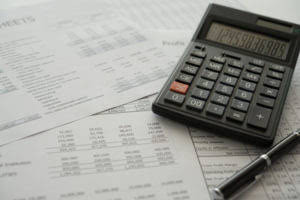
The straight-line method is a way to calculate depreciation by evenly spreading the asset’s cost over its useful life. For example, if an asset has a cost of $10,000 and a useful life of 5 years, the straight-line rate would be $2,000 per year. However, with the double-declining balance method, the rate is doubled to $4,000 per year. The double-declining balance method is a depreciation technique used to calculate the reduction in value of an asset over its useful life.

Strategic Decision Making
The calculator will compute the remaining value after depreciation based on the provided inputs. Salvage value helps to figure out how much your old stuff is worth when it’s done being useful. It’s the estimated value of something, like a machine or a vehicle, when it’s all worn out and ready to be sold. This differs from book value, which is how to find after tax salvage value the value written on a company’s papers, considering how much it’s been used up. The double-declining balance method doubles the straight-line rate for faster depreciation.
What is the tax rate used in calculating after-tax net salvage value?
Calculating the after-tax salvage value allows businesses to determine the value they will receive from selling an asset after accounting for taxes. Use the applicable income tax rate for the asset sale to calculate the after-tax salvage value accurately. Factors such as market conditions, asset condition, selling expenses, and tax rates can all impact the after-tax salvage value of an asset. Selling expenses reduce the net selling price of the asset, which in turn affects the gain or loss on the sale and ultimately the after-tax salvage value.
Calculating the After-Tax Salvage Value
- Understanding the definition and significance of salvage value helps business owners and managers make informed choices and plan for the future.
- Salvage value can be estimated based on factors such as the asset’s age, condition, and market demand.
- To calculate the salvage value after tax, you will need to determine the asset’s remaining book value, account for any tax implications, and apply the appropriate tax rate.
- By thoroughly understanding the tax implications, estimating the pre-tax salvage value, and deducting the tax liability, you can determine the salvage value after tax accurately.
- An asset in good condition is likely to have a higher salvage value compared to one that is damaged or in poor condition.
- If an asset is sold for more than its adjusted tax basis, the excess is subject to capital gains tax.
A tax rate of 30% is applicable to both income and gains and is not expected to change in 5 years. Tax code requires the company to depreciate the plant over 5 years with https://brichemediagroup.co.ke/2022/09/15/illinois-income-tax-rates-who-pays-in-2025/ $10 million salvage value. Salvage value can be estimated based on factors such as the asset’s age, condition, and market demand. Depreciation reduces an asset’s book value, which can affect the gain or loss on the sale of the asset, ultimately impacting the after-tax salvage value. The straight-line method allocates an equal depreciation expense across each period of an asset’s useful life.
How is Salvage Value used in Depreciation Calculations?
It represents the amount for which an asset can be sold or disposed of after it is no longer needed. It is expected to stay economical for 5 years after which the company expects to upgrade to a more efficient technology and sell it for $30 million. Following formulas are used in net present value calculation when there are tax implications. The condition of the asset can impact its pre-tax salvage value, which will subsequently influence the salvage value after cash flow tax. Certain deductions, exemptions, or allowances provided by tax laws might affect the tax liability, so it’s important to consider them when calculating the salvage value after tax. In some cases, after deducting the tax liability, the salvage value after tax can be negative, indicating that the disposal of the asset may result in a loss.

Why is it important to calculate after-tax net salvage value?
Salvage value is a concept that holds significant importance in the world of business. This value plays a crucial role in financial decision-making as it affects various aspects such as depreciation, asset disposal, and capital budgeting. Understanding the definition and significance of salvage value helps business owners and managers make informed choices and plan for the future.

- Therefore, it is advisable to perform sensitivity analysis and scenario analysis to assess how different values and methods of salvage value affect the NPV and IRR of a project.
- The salvage value calculator evaluates the salvage value of an asset on the basis of the depreciation rate and the number of years.
- It is based on the value a company expects to receive from the sale of the asset at the end of its useful life.
- Different types of assets may have varying tax treatment upon sale, which can affect the after-tax salvage value.
- Salvage value is defined as the book value of the asset once the depreciation has been completely expensed.
With a 20% straight-line rate for the machine, the DDB method would use 40% for yearly depreciation. Next, the annual depreciation can be calculated by subtracting the residual value from the PP&E purchase price and dividing that amount by the useful life assumption. Starting from the original cost of purchase, we must deduct the product of the annual depreciation expense and the number of years. The original price or initial cost of an asset includes its purchase price, installation costs, and any other expenses incurred to bring the asset to a usable state.
This guide provides a detailed explanation and practical examples to help you make informed decisions. On the other hand, the market value approach takes into account the current market conditions and the potential resale value of the asset. This method considers factors such as supply and demand, economic trends, and the condition of similar assets in the market. It provides a more realistic estimate of the salvage value based on the asset's market worth.
